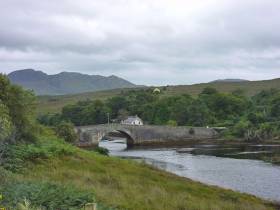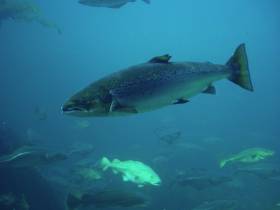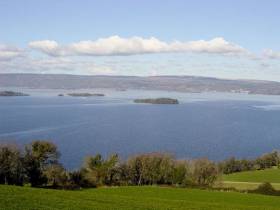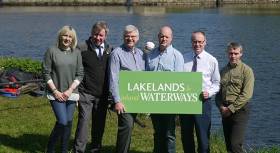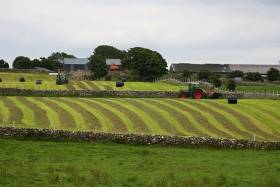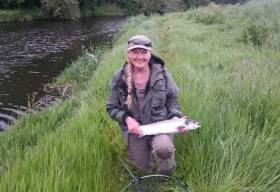Displaying items by tag: angling
#Angling - Inland Fisheries Ireland (IFI) is seeking submissions from interested parties in relation to proposals to introduce two bye-laws on the Clare River system, and a bye-law defining the upstream and downstream boundaries of the Cong Canal/River – both in the Western River Basin District.
The proposals currently under consideration for the Clare River sysrem are to request the minister to introduce two bye-laws as follows:
- Revoke bye-law 841 of 2008 to permit all legal angling methods on the Clare River from Daly’s Bridge in the townland of Corrandrum to a point 300m upstream of the footbridge at Anbally in the townlands of Anbally and Turloughmartin, Co Galway. This section of river is currently fly-only and the proposed bye-law will bring it into line with the rest of the Clare River.
- Extend the closed season for all angling on the Abbert and Grange Rivers by two months to cover the period 1 September to 31 March annually. This bye-law is being proposed as a conservation measure having regard to the very significant contribution of both of these rivers to wild brown trout stocks in the Clare River system and Lough Corrib.
Meanwhile, the proposal under consideration for the Cong Canal/River is to request a bye-law that would clearly define the upstream boundary between Lough Mask and the Cong Canal and the downstream boundary between the Cong River and Lough Corrib.
The purpose of the proposed bye-law is to enable the effective enforcement of legislation governing the open angling seasons for trout and salmon on the Cong Canal/River as these differ from the open seasons for these species on Loughs Corrib and Mask.
If considered necessary, IFI may decide to arrange a public consultation meeting on any or all of the proposed bye-laws. All submissions must be received in writing and will be published on the IFI website.
Submissions should be marked 'Public consultation- Clare River system' or 'Public consultation - Cong Canal/River' respectively, and be submitted by email to [email protected] or by post to:
The Director,
Inland Fisheries Ireland,
Teac Breac,
Earl’s Island,
Galway
The public consultation period will run for four weeks and the closing date for receipt of submissions is 5pm on Thursday 11 August 2016.
Review Of National Pike & Trout Policies
#Angling - Inland Fisheries Ireland (IFI) has today (Monday 4 July) published the indicative timetable for the review of the National Pike and Trout Policies.
Following the appointment of a Policy Review Group later this month, the review process will commence with a scoping consultation which will be open to all interested parties.
IFI says it has long recognised that public policy-making can be enhanced through the active involvement and contribution of all stakeholders and has set out how it will develop policies and consult with stakeholders in its IFI Procedure on Policy Development and IFI Stakeholder Consultation Policy.
It is expected that the updated National Pike and Trout Policy documents will be available a year from now in July 2017.
A policy group will be appointed shortly and will comprise of five IFI staff from the research, operations and business Development divisions.
“IFI is committed to consulting with stakeholders and the general public on matters of inland fisheries policy," said chief executive Dr Ciaran Byrne. "I expect the forthcoming scoping consultation process to gather useful information that will provide an evidence base for the update of the pike and trout policies in tandem.
“An agreed view from angler stakeholder groups would be most welcome and I urge the representative groups to work for such an outcome. I encourage all domestic and tourist anglers, tourism providers and the general public to provide their views on the important issues regarding the management of our important pike and trout species.”
The inland fisheries body acknowledges the upcoming protest being staged by pike interests and can confirm that no decision has been taken regarding the cessation or otherwise of pike management operations in designated trout waters for 2017.
IFI says it has accelerated the review of the policies and is working to ensure the completion of this exercise in as consultative way as possible that ensures all interested parties have input to policy formulation .
As advised previously, work continues within IFI regarding the examination of:
- The current stock management programme, including resource usage, fish transfer and health and safety.
- Marketing and socio-economic information to include actual and potential economic value.
- Scientific information to provide advice and to consider the scientific merits of the processes being currently undertaken.
The timeline for the review process is available to read or download HERE.
Trolling Ban Proposed For Glen Lough
#Angling - Inland Fisheries Ireland (IFI) is seeking submissions from interested parties in relation to a proposal to introduce a byelaw prohibiting trolling on Glen Lough (River Lackagh) in the North Western River Basin District.
The proposal currently under consideration is to request the minister to introduce a byelaw on Glen Lough to prohibit trolling for any species of fish at any time.
Trolling means to fish from a boat, which is being rowed or mechanically propelled through water, by trailing or towing a fishing line with a hook, bait or lure attached.
IFI may, as part of the process, arrange a public consultation meeting if deemed necessary, but all submissions must be received in writing and will be published on the IFI website at www.fisheriesireland.ie.
Submissions should be marked ‘Public consultation - Glen Lough’ and sent by email to [email protected] or by post to:
The Director,
Inland Fisheries Ireland,
Station Road,
Ballyshannon,
Co Donegal
The public consultation period will run for four weeks and the closing date for receipt of submissions is 5pm on Friday 22 July 2016.
Mayo Man Convicted Over Unlawfully Caught Salmon
#Angling - A Mayo man was charged with possession of eight unlawfully caught salmon at Lacken Pier on 22 July 2015 at a sitting of Ballina District Court earlier this month.
Stephen Rooney of Ballina, Co Mayo pleaded guilty to the charge and was fined €160 with costs amounting to €250.
Judge John Lindsay heard evidence that fishery officers had observed a car on Lacken Pier on the night of 21st July 2015. The officers noticed liquid oozing from the underside of the car, which they suspected to be blood and mucous from fish.
The car was kept under observation overnight, and in the morning several attempts were made to contact Rooney, its owner. The car was searched when he failed to respond, and eight fresh net-marked salmon and an undersized lobster were found in the boot.
Commenting on the case, Inland Fisheries Ireland (IFI) chief executive Dr Ciaran Byrne said: “Netting of salmon in the open sea has been illegal since 2007 as it is indiscriminate and takes fish destined for different river systems, some of which have depleted salmon stocks and are under severe pressure.
“Salmon angling is extremely valuable to the tourism industry in North Mayo and provides revenue, employment to local communities, and recreation to thousands of anglers both local and visiting from abroad and other parts of Ireland. Inland Fisheries Ireland will continue to work to protect this resource for the good of the community.”
Elsewhere, at sitting of Galway District Court on 7 June, Judge John King convicted two Galway fishermen of the non-payment of fines issued by fishery officers, and ordered a third man to pay a donation on the same charge.
Leslie Sammon, with an address at Ballinasloe, Co Galway, was before the court over non-payment of a fixed penalty notice of €150 for failing to complete a logbook upon taking a salmon from the Clare River, Claregalway last July. He was ordered to pay €200 to the RNLI by Judge King, who agreed to a donation in lieu of a conviction.
Alekseys Minkevics, with an address at Knocknacarra, Co Galway, was also summonsed in connection with an incident on the Clare River on 30 September last.
Minkevics, who failed to appear in court, had been observed fishing with live perch, in breach of fisheries legislation, and failed to pay the fine within the required timeframe.
Judge King convicted Minkevics and ordered him to pay €300, as well as €600 in costs. His fishing equipment was also ordered to be forfeited.
Viktor Buss, with an address at Headford Road, Galway was charged with a breach of a coarse fish byelaw on 5 October when he was found in possession of 32 coarse fish, eight times the legal limit. He was issued with a fixed penalty notice of €150 which he failed to pay.
Judge King recorded a conviction against Buss, who did not appear in court, and issued a fine of €300 with costs amounting to €600. His fishing equipment was also forfeited.
IFI has a confidential hotline number to enable members of the general public to report incidents - 1890 34 74 24 or 1890 FISH 24. This phone line is designed to encourage the reporting of incidents of illegal fishing, water pollution and invasive species.
Lough Derg Fish Stock Survey Under Way
#Angling - Inland Fisheries Ireland (IFI) is currently carrying out a fish stock survey on Lough Derg to assess the current status of the fish populations in the lake.
The survey began on Monday 13 June and continues till Friday 1 July. It involves the netting of over 200 sites throughout Lough Derg and Parteen reservoir.
Four different types of survey nets are being used. Many of these survey nets are being set on the lake bed but a small proportion are being set as floating survey nets on the surface. A hydroacoustic survey of the deeper parts of the lake is also being undertaken.
The fisheries research survey will be conducted by IFI under the supervision of Inland fisheries research staff and will include a total of five boat crews with one of these working at night.
The survey will provide a range of information on the fish stocks in the lake, such as size distributions of fish captured, age and growth information for all species, diet of selected species, and catch per unit effort (CPUEs) for each fish species.
It will also provide information on the status of pollan, a rare and endangered fish species. In addition, samples for genetic analyses of brown trout and pike and other species will be taken.
The survey crews will be very visible on Lough Derg over the next few weeks and all sets of nets will be marked with distinctive buoys labelled ‘IFI Survey’.
Any anglers or other lake users are asked to be vigilant if out and about on the lake over the next few weeks and to avoid snagging in the nets.
For more information see the Lough Derg survey FAQ on the IFI website HERE.
The Lakelands and Inland Waterways World Pairs Angling Championship 2016 has been launched.
The cross-border event, takes place from 5-9 September 2016, and attracts top anglers from the UK, Ireland, Europe, challenging them to not only to catch the natural wild fish so prolific in the area, but to do so in partnership.
Over 100 entries have already been registered for the competition, which is based within a one hour radius of Killadeas on Lough Erne, Northern Ireland, and Garadice on the Shannon-Erne Waterway in Ireland.
Anglers from across the globe will undertake the challenge of catching wild fish in the picturesque Lakelands, with the added difficulty of doing so in partnership. Naturally, only the best anglers participate in this contest, in five locations over the five days.
Running the event across the border is an important feature of the competition for the sponsors, Lakelands and Inland Waterways, the tourism brand owned by Fáilte Ireland and Waterways Ireland. It is a showcase for the excellent angling venues, but is their close proximity of a maximum 30 minute drive to the peg from the draw location which allows this partner event to work.
The Lakeland & Inland Waterways co-chairs Fáilte Ireland & Waterways Ireland continue to sponsor the World Pairs, with further support from Fermanagh and Omagh District Council & Leitrim County Council and active ground support from DAERA Inland Fisheries & Inland Fisheries Ireland.
Sharon Lavin, Head of Marketing, Waterways Ireland, said: “The Lakeland and Inland Waterways World Pairs has shone a spotlight on the high-quality and large quantity of wild fish challenging all anglers coming to Ireland's Lakelands. The competition has sparked a huge level of international interest and it is wonderful to see that reflected in the number of competitions now taking place in the Lakelands and the number of anglers travelling from abroad to participate."
Entry is still open – just find a partner and contact [email protected] to participate, or visit the website at www.worldpairsangling.com. The contest involves fabulous fishing in the scenic Lakelands, and includes new areas which had not previously been accessible.
A first prize of €10k and second prize of €5k head a list of awards which includes the DAIWA Cup. An individual entry competition will run inside pairs, with a full entry payout providing cash for five peg sections, daily by county, and a top ten overall topped up by £8,500 in tackle vouchers plus more from DAIWA Sports Ltd.
#Pollution - Inland Fisheries Ireland (IFI) has issued an appeal to all farmers to be vigilant when harvesting silage and spreading slurry to avoid water pollution.
Silage operations are ongoing all summer and silage effluent has the potential to cause devastating pollution in streams and rivers. Silage effluent is one of the most polluting substances to threaten the environment and can cause massive fish kills if it enters a watercourse.
Slurry spread on grassland over the summer months can also wipe out fish and invertebrate life if allowed to enter a stream. Water levels in streams and rivers are low in the summer months and have less dilution capacity, so are particularly vulnerable to pollution at this time.
“The fisheries service is appealing to all farmers and contractors to be careful that no silage effluent is allowed to run off into drains or watercourses," said Dr Greg Forde, head of operations at IFI.
"Round bales are the most environmentally friendly way to store silage. However, if a silage pit is used, it must be properly lined to prevent leakage.
“Good farmyard management will help to prevent accidental run-off and protect the local environment. Slurry spreading should only be carried out in dry weather, and not when heavy rain is forecast. It should never be spread close to a watercourse, and tanks should never be cleaned beside a stream or river.
Dr Forde addd that IFI “is grateful to the farming community for its co-operation at this busy time of year, and for its assistance in maintaining a clean and healthy environment in our lakes and rivers.”
IFI has a confidential hotline number to enable members of the general public to report incidents of water pollution, fish kills and illegal fishing or angling at 1890 34 74 24 or 1890 FISH 24.
#Angling - Inland Fisheries Ireland (IFI) is seeking submissions from interested parties in respect of a number of proposed Bye-laws pertaining to the Eastern and Neagh Bann International River Basin Districts.
IFI intends requesting the minister to introduce these Bye-laws with a view to enabling improved management of these waters in a sustainable manner.
The key Bye-laws to be introduced and the areas being considered for review are as follows:
- To set the annual close season for angling for all trout species for Lough Lene, Co. Westmeath to the period 13 October to the last day of February inclusive.
- To introduce a bag limit of one sea trout under 40cm (the River Vartry is a closed fishery under the Salmon and Sea trout Angling Regulations, 2016) per day during the angling season on the River Vartry from the date of the signing of these regulations to the 31 December 2018.
- To prohibit the killing of any coarse fish or pike from the waters of Lough Muckno, Co Monaghan from the date of the signing of these regulations to the 31 December 2018.
IFI may, as part of the process, arrange a public consultation meeting if deemed necessary, but all submissions must be received in writing and will be published on the Inland Fisheries Ireland website at www.fisheriesireland.ie.
All submissions received by IFI will be published on its website. In addition, IFI is subject to the provisions of the Freedom of Information Act 1997 and therefore has to consider any request made to it under that Act. If you consider that any part of your submission would be subject to any of the statutory exclusions under that Act please so indicate in your submission, specifying under which exemption you believe the content should be excluded.
Submissions should be clearly marked ‘ERBD Byelaw Consultation’ and sent by email to [email protected] or by post to:
The Director,
Inland Fisheries Ireland Dublin,
3044 Lake Drive,
Citywest,
Dublin 24
The closing date for receipt of submissions is 5pm on 13 June 2016.
Mayo Man Jailed For Serious Assault & Fisheries Offences
#Angling - A Mayo man has been sentenced to 14 months in prison for serious assault and fishery offences.
Michael Duffy, with an address at Bleankeragh, Ballycroy, Co Mayo, was before Judge Mary Devins at a sitting of Achill District Court on 12 May for sentencing in relation to a poaching incident which occurred on the Owenduff River on 26 June last year.
At an earlier hearing of the case at Westport District Court on 22 April, Judge Devins convicted Duffy on a charge of endangerment brought by the Director of Public Prosecutions (DPP) under Section 13 of the Non-Fatal Offences against the Person Act, 1997.
Duffy pleaded in relation to five fisheries offences including two charges of assault, possession of a net and illegally caught salmon, as well as the use of a vehicle in the commission of an offence.
At the earlier hearing, the court heard that fishery officers had observed Duffy and another man set a net in the Owenduff River, an important salmon and sea trout angling fishery. They observed Duffy return to the river, haul the net and leave in a vehicle.
When the officers went to stop the vehicle, Duffy reversed at speed into a gate that Assistant Inspector Gerry Stadler had closed, causing serious injury to him.
The gate was left hanging on the back of the vehicle, and Duffy and the other man got out of the car and removed the gate, before driving off and leaving the injured officer lying on the road bleeding from his head.
Assistant Inspector Stadler was brought to hospital with severe whiplash and shoulder injuries, which resulted in him requiring surgery and being unable to work for over nine months.
Commenting at the April hearing, Judge Devins deemed Duffy’s evidence “contemptuous” and “contemptible”.
At the sitting this month, Judge Devins sentenced Duffy to a total of 14 months in prison, including two consecutive sentences of six months in respect of the endangerment charge prosecuted by the DPP and assault charges brought by Inland Fisheries Ireland (IFI).
Two one-month prison sentences, also to run consecutively, were imposed in respect of the possession of a net and illegally caught salmon. The charge relating to the use of a vehicle in the commission of an offence was taken into account.
Fines totalling €1,200 were imposed, with costs amounting to €750. In the event of an appeal, recognisances were fixed on Duffy’s own bond of €600 with an independent surety of €2,400.
Duffy’s co-defendant, Michael Joe Gallagher of Knockmoyleen, will be sentenced in July, in respect of possession of a net and illegally caught salmon.
IFI chief executive Dr Ciaran Byrne commended the fisheries officers involved, in particular Assistant Inspector Stadler.
“This case highlights the dangers fishery officers face on a daily basis when enforcing fisheries legislation to protect Ireland’s precious wild salmon stocks and I must commend and thank them for their actions," he said.
“The need to protect salmon stocks in the Tullaghan Bay complex which includes Carrowmore Lake and the Owenmore and Owenduff Rivers is particularly important as the mixed stock salmon fishery in Tullaghan Bay and the Owenmore River is closed to local draft net fishermen because of declining salmon runs.”
IFI has a confidential hotline number to enable members of the general public to report incidents - 1890 34 74 24 or 1890 FISH 24. This phone line is designed to encourage the reporting of incidents of illegal fishing, water pollution and invasive species. For more information visit www.fisheriesireland.ie.
Top Talent Lined Up For First North West Angling Fair
#Angling - Pauline McClenaghan and Gordon Armstrong are among the celebrity anglers lined up for the inaugural North West Angling Fair in Strabane, Co Tyrone later this month.
As the Londonderry Sentinel reports, the festival will take over the Melvin Sports Complex on the River Mourne on Saturday 28 and Sunday 29 May and give visitors an opportunity to see some of the world's best fly-casters and fly-dressers in action.
Also in attendance will be world champion fly-caster Andrew Toft from Glasgow, Mooney Goes Wild contributor Ken Whelan and Scottish casting instructor and ghillie Scott Mackenzie. The Sentinel has more HERE.
In other angling news, anglers taking part in the Waterways Ireland-sponsored Classic Fishing Festival in Fermanagh last weekend were forced to abandon a fishing stand due to an overflow of sewage into Lower Lough Erne, according to the Fermanagh Herald.
While organisers moved to accommodate competitors elsewhere, it has since emerged that the overflow near Killadeas was one of several discharged permitted by NI Water, though none affected the festival's other fishing sections.































